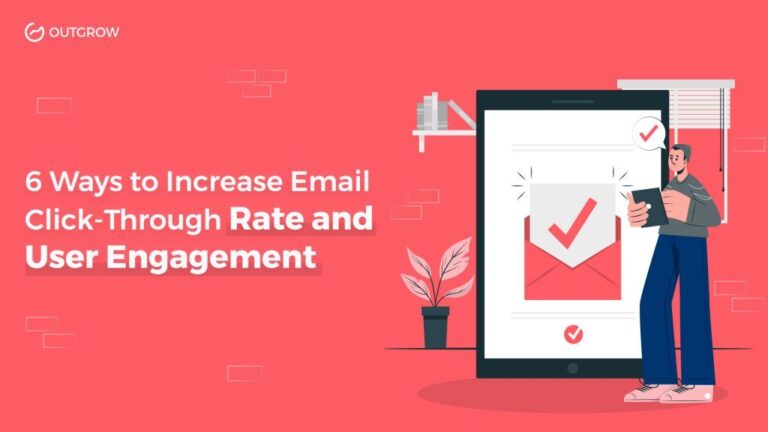Guide to B2B Intent Data in 2023
Table of Contents
We have all been hearing that data is the new oil. Sure, but how do businesses leverage this data? From data through website sessions to data from search engines, data around user intent can be a marketer’s heaven as it has the potential to transform the way you interact with your prospects. So, what are you waiting for? Dive in as we discuss more about B2B intent data, and how you can utilize it to grow your business.
What Is Intent Data?
Simply put, intent data is the information gathered from an internet user’s behavior. We all make hundreds of searches every day and it is these searches that offer marketers and businesses valuable information on user intent. Based on the searches, one can gauge the intent behind it and whether it will lead to a specific action.
This essentially also serves as an insight into the buyer’s journey. Considering how buyers these days make decisions before even contacting customer support, this is a goldmine of information that every marketer would want to get their hands on.
Extending this logic to B2B is easy, business executives are searching for solutions to problems that you can solve. Getting access to this data can help you stand a chance to score a great client.
What Are Some Examples of Intent Data?
Intent data also comes in different types. There’s the data that you can access through your own website and another type that you can access through alternative channels that are not directly under your control. The data from those channels may also not be easily accessible.
First-Party Intent Data
Marketers and business owners have been making use of first-party intent data since the inception of data. The concept of tracking visits on websites, pricing pages, product pages forms part of first-party intent data collection. This includes but is not limited to –
- Time spent on the website
- Heatmaps
- IP Addresses
- Lead magnets
While first-party intent data is considered limited, it does not have to be. There are multiple ways to get more information through first-party data. This is where interactive content types like quizzes, calculators, chatbots, polls, surveys, and ecommerce recommendation quizzes come to your rescue.
Let’s discuss these types here to help you leverage your first-party data better.
1. Quizzes
Quizzes are fun interactive content types that ask users questions based on their interests and offer marketers great insights into their needs and preferences. For example, take this interactive quiz on our website
Suppose, someone from the automobile industry lands on our website and sees this quiz. It is a relevant lead magnet for them to have on their website. Accompanied with the results section of this quiz, is a lead generation form, that helps us get lead information of people who have visited and taken the quiz.
With the data submitted by the user, we can retarget them with more quizzes, calculators in the auto industry or send a personalized email with relevant offers and discounts that would help with boosting conversions.
This is our go-to source of intent data because this points in the right direction, exactly what our prospects are looking for.
2. Calculators
Calculators act as a fantastic source for first-party intent data. VenturePact, a software development marketplace, built an interactive calculator on Outgrow for their website for improving their lead generation and customer interaction. The calculator proved to be high converting with a click-through rate of 66%. Moreover, it generated 87,381 qualified leads and lots of intent data to understand their prospects and leads better.
3. Chatbots
Chatbots are the customer support popups that you see on almost every website these days. These act as a saving grace as they are available 24/7 which might not be possible with only human resources. Prospects can simply drop a message or their email address on the live chat window to get real-time responses. In fact, these bots could be built conversational in nature in order to give a human-like experience. Hence, chatbots act as a great source of first-party intent data.
You can also add resource or product links to your chatbot to track which ones were clicked by prospects. This will give you access to what they were looking for even if they don’t end up providing their contact information.
Check out this website pricing bot we created for our website.
4. Ecommerce Recommendations
Big brands like Maybelline and Amazon use ecommerce recommendations on their website. Ecommerce recommendations are quizzes used by ecommerce platforms to combat choice paralysis among their users. It helps customers decide what to buy with the help of a quiz that asks relevant questions based on their needs and preferences.
Thus, ecommerce recommendation quizzes can be a huge source of first-party data. They not only tell us what the prospects are interested in but also give away exactly what they would like to buy. With this, you can send them personalized emails offering discounts on these products or suggesting that they should add this product to their cart.
Third-Party Intent Data
Third-party intent data as the name suggests is data collected from platforms other than your website. This can be intent data from other websites where you have your links placed. For example, data from review sites is a good example of third-party intent data. Platforms like G2, Source Forge have valuable insights on users who are dropping reviews and prospects who are searching for a product. Check out G2 intent data for more insights.
How Do You Leverage Intent Data?
Leveraging B2B intent data is not a cakewalk but definitely worth the try.
Source: MarketingProfs
1. Personalize the user experience
If you know what your prospective customers are looking for, you can create a personalized user experience on your website. This can be done with the help of the IP addresses that your Google Analytics has saved or with the help of interactive content tools like Outgrow. Interactive content offers 21 different ways that give you access to lead information even if the prospects haven’t dropped their emails.
2. Identify potential new geographies
With the help of both third-party and first-party intent data, you get new information on your prospects. For example, you thought that your target audience is from the European region or the US. But getting access to data highlighted that you also have prospects and interested parties from the Asia Pacific region. Now, this can be a great insight to work with as there was the whole geography that you were missing out on.
3. Create more relevant content
Having more information on your audience makes intent marketing easier. This directly adds to your content marketing efforts because now you know what sort of content to create for your target audience.
With more well-developed buyer personas, you can frame CTAs that actually work. You can also use more effective content marketing tools like interactive content to better leverage your intent marketing efforts.
4. Run personalized and contextual ads
Running ads on your desired social media platforms might just have gotten easier. With the help of intent data, you can frame ad messaging, graphics, and CTAs around what your prospective audience is looking for.
Moreover, tools like Linkedin’s Matched User feature and G2 intent data can just make your performance marketing efforts bear fantastic results.
So, if you are not leveraging these tools yet, you might want to rethink your decision.
Why Is Intent Data Marketing Useful For B2B Marketing?
If it isn’t already clear, intent data is going to determine your potential to transform prospective clients to final sales. It is going to help marketers so that they don’t lose prospects just because they weren’t “looking” or “hearing”.
Intent data collection leads to intent marketing. With all the information in your armor, creating marketing strategies for your ideal buyer persona has never been easier. For B2B businesses it also opens doors for account-based marketing and other personalized marketing efforts for enterprise clients and big businesses. And well, 99% of marketers in a study say personalization aids in building customer relationships.
The image above by Gartner shows how businesses are willing to pay to get intent information from multiple sources.
List of Intent Data Providers
Data providers use various sources to collect intent data such as website traffic, social media activity, email interactions, search behavior and more.
We have your first-party intent data vows sorted. You just need to take Outgrow’s free trial and see for yourself the impact that interactive content has on your number of qualified leads.
But for your third-party intent data needs, here’s a list of tools you can use.
1. G2
G2 is a peer-to-peer review site for businesses. It is a go-to platform for clients to find company reviews and select a suitable product for their use-case across industries. G2 has access to huge amounts of intent data on companies owing to the reviews dropped by people on its website. It also has integrations with CRM platforms making use of intent data super easy and effective.
2. ZoomInfo
Zoominfo is an all-in-one insights software that gives you access to information and intent data on your target audience. With its intelligence feature, you get access to intent data as well as website visitor tracking. Using this information, you can use their in-house sales automation and integration features to set up a workflow
2. 6sense
6sense offers you access to the “hidden” buyer behavior through their intent data. This data, they claim, can be used to “lighten” the dark funnel and to use buyer data to its optimum potential. It offers a bunch of features for you to consolidate all your 1st and 3rd party data in one place. This makes analysis easier and you will be able to use this data in your sales automation channels. 6sense also uses AI-driven models for historical and real-time data to make comparisons and draw interpretations.
4. DemandBase
Demandbase specializes in ABM – account-based marketing strategies and GTM- Got-to market strategies. It again acts as an important addition to your marketing stack. From finding the right accounts, engaging with them, and converting them, the entire process can be taken care of on Demandbase.
Conclusion
Yes, intent data is here to stay, and for B2B businesses it is going to be a future full of intent data and intent marketing. So, how about you join the bandwagon today and get the first-mover advantage? And if you’re looking for ways to 2x your lead generation and conversion potential, you got to try interactive content NOW! Here’s your chance – sign up for a free trial.

















